Equity drops every Friday at 6:00 am PT, so subscribe to us onApple Podcasts,Overcast,Spotifyand all the casts.
Technology
Welcome to TechCrunch2019 Holiday Gift Guide! Need help with gift ideas? We&re here to help! We&ll be rolling out gift guides from now through the end of December.You can find our other guides right here.
Remote working has become a new normal in the life of an employee. Spurred by ubiquitous broadband and mobile connectivity, lighter and smaller computers, and everything you need in the cloud, a lot of people have felt a lot less of a need to be in the same physical space as everyone else, day in day out, to get things done.
And yet, there remains a critical mass of people in and near big towns and cities who continue to commute.
For this guide, we&re focusing on commuters who eschew cars for all the obvious reasons — traffic, parking, gas costs, and more traffic — and instead opt for buses, trains, subways and bikes to travel to their &offices& — be they actual offices, or cafes or other workspaces — on a regular or semi-regular basis.
Daily commutes around most of the worldmetro areas can stretch into more than an hour per day on average, according to research from Moovit. In other words, these are presents that go to the heart of how your special people spend significant chunks of their days, weeks, months and years.
This gift guide is to help make that time more well spent.
These products are the epitome of the genre-crossing, &prosumer& lives many of us seem to live today: they straddle the worlds of practicality and of fun, presents that might help them work during their commute, or get their minds off work, or to make their work trip a little safer or easier. Happy shopping (and hopefully, happier commuting).
This article contains links to affiliate partners where available. When you buy through these links, TechCrunch may earn an affiliate commission.
Smart bike lights
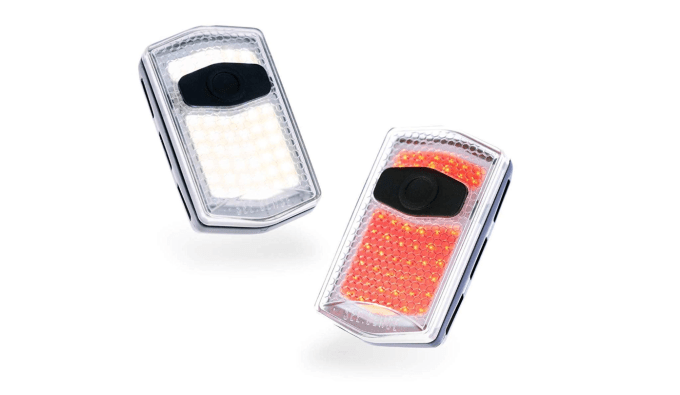
Therebeen a big shift in these over the last decade or so. The bike lights of yesterday were barely-visible front and rear lights, semi-permanently attached to your handlebars and backseat, powered by batteries that always seemed to run out. Today, you can buy much brighter LED-based lights, which work on USB chargers to keep doing their job and easily attach and detach wherever you choose to buckle them.
Smart lights are the next gear up on that trajectory, with app-based controls and so.much.more. UK company See.Senseversion packs a strong punch: on top of the being brighter, easier to remove and recharge, the lights link up with an app to alert you when someone appears to be stealing your bike, and they sense when you are cycling faster and slower and blink more rapidly when theremore traffic to make sure the cyclist is better seen. The downside is that hills won&t be the only steep thing on your horizon.
Price: $120 on Amazon for a Front/Rear set
Bike-mounted speaker
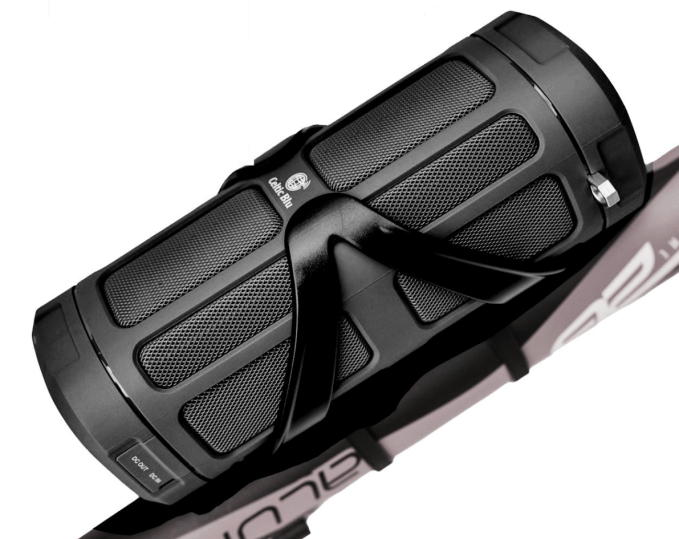
A worrying number of cyclists get around the streets with headphones in their ears to pick up navigation instructions, listen to music or podcasts, or talk on the phone. This is not ideal, though, as it means they cannot fully hear the noise of traffic in their midst. A bike-mounted speaker is a way to let the rider continue to listen to their audio, but not at the detriment of hearing other important traffic noises.
This Celtic Blu speaker is one of the more fancy of the dozens of bike speakers that are on the market today. Alongside the basics of offering a Bluetooth connection to play music or other media from your phone and being waterproof, it doubles as a charging bank for other devices, can work as a microphone to take calls, and has an additional set of controls that you access from the handlebars to adjust sound, answer calls and other actions more safely. The downside is that itone of the bigger of the speakers, potentially taking up space you migh have mounted a water bottle.
Price: $80 on Amazon
Streaming, podcast or audiobook gift cards
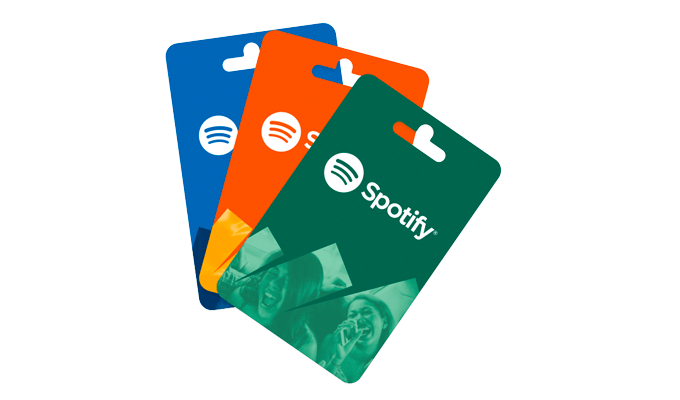
Streaming services from Spotify, Apple, Amazon and others have been growing in ubiquity by leaps and bounds, but if your commuter isn&t already subscribing to one of these, or if they&re only using the free tier, giving them a chance to test out the premium service with a giftcard could be a welcome present. It can also be one to personalise: find a mix of podcast programs you think your commuter might like to hear, or pick out a selection of books for the listening, to give alongside the card. (See some book recommendations here and here.)
Price: Audible starts at $15/month; Spotify Gift Cards are widely available from retailers including Amazon.
Wireless ear buds and headphones

I personally worry about how safe these are for cycling, so I won&t endorse them for bike usage. But they have quickly become one of the must-haves for commuters on other transportation modes who are mad as hell about tangled cords and not going to take it anymore. AppleAir Pods Pro, at $249, are a noticeable improvement on the previous generation of their wireless buds, and the world has noticed: they have been a huge sell-out success, with orders now only shipping in January. There are dozens of others now on the market if you don&t want to wait, or pay the premium to own an Apple product.
Price: Airpods Pro, $249 on Amazon | For a more classic (and cheaper) headphone style, try these from Sony.
E-Reader

No, not everyone has one of these. Yes, they are still a huge seller for Amazon, underscoring their enduring popularity. We like the Kindle Paperwhite (pictured above) or the Kindle Oasis, the latter of which is around $145 more but brings in a bigger screen, an adjustable-warmth backlight, and physical page turning buttons.
Read some of our book recommendations here.
Price: Kindle Paperwhite, $105 on Amazon | Kindle Oasis, $250 on Amazon
Panniers
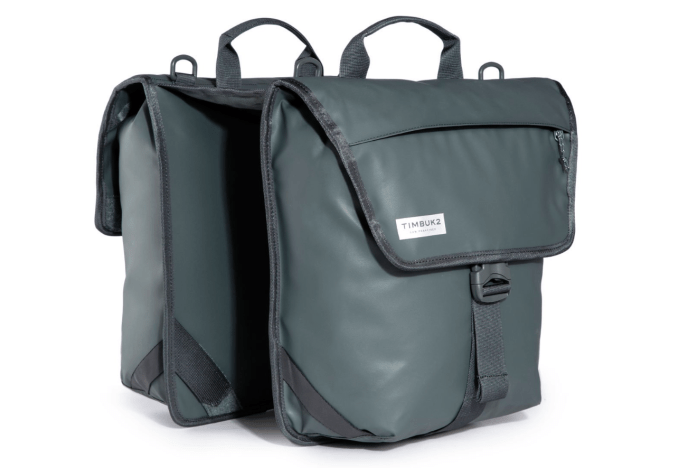
I&m a bike commuter myself and have been toughing it out (literally and figuratively) with a pair of Ortlieb Back-Roller Classics for years. These monsters are so durable that the set I have now are as old as my oldest child (14) and they still look nearly new.
But I&m going to be honest. They&re not beautiful, and even with two inside pockets, they can be hard to peer inside when you&re looking for something smallish. (The blood has rushed out of my hands more than once thinking I&d somehow lost my wallet or phone, only to find them deep down inside the bag.)
The cool thing is that there is now a huge range of options on the market for new bags, whether you want them for leisurely use, for work commuting, for a fashion statement, to make them easier to carry when you&re off your bike, or all of the above.
Arkelbag is laptop-focused (but sells as a single); Timbuk2 (pictured above) if you&re after a &tandem& style; and if you are looking for a stylish pannier to replace purely functional ones used by your commuter, you can consider the Norfolk model from Brooks or the Sac from Linus.
Price: Arkel Commuter bag, $189 | Timbuk2 Tandem bag, $129 on Amazon | Brooks Norfolk, $120 on Amazon | Linus Sac, $70
Activity tracker
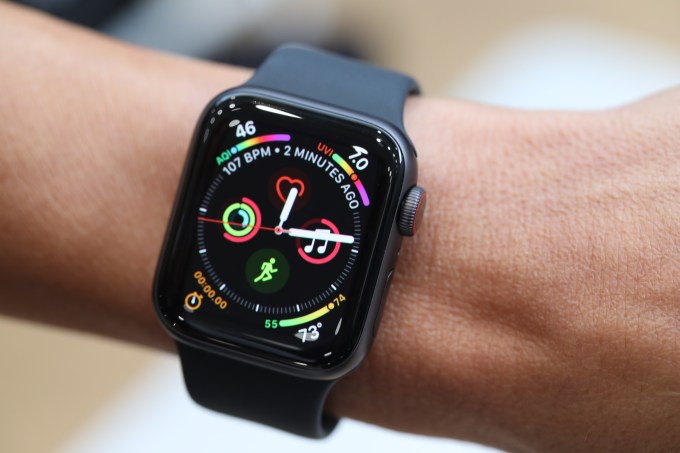
These are not just for the people who cycle, run or walk to work. While a lot of a commuterjourney might take place sitting or standing on public transportation, there is actually quite a bit of walking that comes at the start and finish of the route. A good activity tracker can help a person track how they rack up the miles and feel a little better about all the hours they subsequently spend sitting at a desk.
You can go for a premium Apple Watch starting at around $400, or you can opt for a basic Fitbit at under $100.
Price:Apple Watch, from $384 on Amazon | Fitbit Inspire, $80 on Amazon
Privacy Screen

Borrowing one from Zack, who has a much more extensive list of privacy-related gifts, to draw one out for those who pull out their laptops during their morning commutes, whether itto work or do something else. Whatever it is: wandering eyes sitting nearby can see what you&re doing. A special screen that blocks all angular views except straight on in front on the machine is a good way to keep the nosey parkers out of your business.
Price: Around $17 on Amazon.
Touchscreen gloves
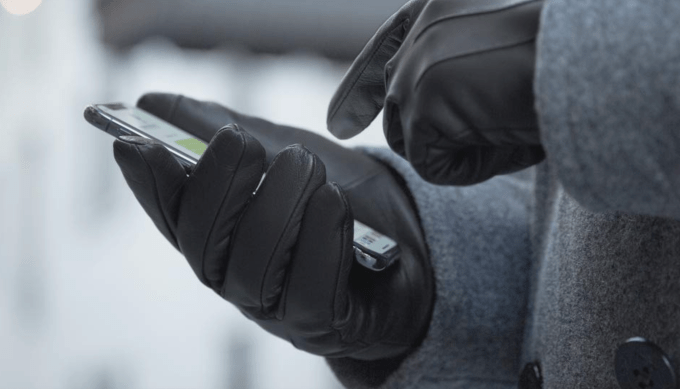
Not strictly (nor even loosely) a gadget, but something that will help you keep using your screen-based companions as the weather turns cooler. You can buy beautiful leather, cashmere-lined versions of these; or you can buy them in acrylic. You can go colourful or stay basic in black. People lose or rip gloves all the time, so even having an extra pair is not a bad thing.
Price: Downholme Leather/cashmere gloves, $60 on Amazon here |knit gloves (a little more modest but still perfectly good), $8 on Amazon.
- Details
- Category: Technology
Read more: Gift Guide: Gifts for the commuters in your life
Write comment (93 Comments)
Recently released documents revealed the FBI has for years secretly demanded vast amounts of Americans& consumer and financial information from the largest U.S. credit agencies.
The FBI regularly uses these legal powers — known as national security letters — to compel credit giants to turn over non-content information, such as records of purchases and locations, that the agency deems necessary in national security investigations. But these letters have no judicial oversight and are typically filed with a gag order, preventing the recipient from disclosing the demand to anyone else — including the target of the letter.
Only a few tech companies, including Facebook, Google, and Microsoft, have disclosed that they have ever received one or more national security letters. Since the law changed in 2015 in the wake of the Edward Snowden disclosures that revealed the scope of the U.S. governmentsurveillance operations, recipients have been allowed to petition the FBI to be cut loose from the gag provisions and publish the letters with redactions.
Tech companies have used &transparency reports& to inform their users of government demands for their data. But other major data collectors, like credit agencies, have failed to publish their figures altogether.
Three lawmakers — Democratic senators Ron Wyden and Elizabeth Warren, and Republican senator Rand Paul — have sent letters to Equifax, Experian, and TransUnion, expressing their &alarm& as to why the credit giants have failed to disclose the number of government demands for consumer data they receive.
&Because your company holds so much potentially sensitive data on so many Americans and collects this information without obtaining consent from these individuals, you have a responsibility to be transparent about how you handle that data,& the letters said. &Unfortunately, your company has not provided information to policymakers or the public about the type or the number of disclosures that you have made to the FBI.&
Spokespeople for Equifax, Experian, and TransUnion did not respond to a request for comment outside business hours.
Itnot known how many national security letters were issued to the credit agencies since the legal powers were signed into law in 2001. The New York Times said the national security letters to credit agencies were a &small but telling fraction& of the overall half-million FBI-issued demands made to date.
Other banks and financial institutions, as well as universities, cell service and internet providers, were targets of national security letters, the documents revealed.
The senators have given the agencies until December 27 to disclose the number of demands each has received.
- Details
- Category: Technology
Apple may dominate the wearable conversation here in the States, but things look a fair bit different on the other side of the world. In Asia, Xiaomi is the giant in the room. According to new numbers form Canalys, the Chinese manufacturer was the key driver in global growth.
Wearable band shipments grew 65%, year over year for Q3. Xiaomi continues to top the list, with an even more impressive 74% versus this time last year. That puts gives the company 27% of the total global wearable band market — its highest number since 2015.
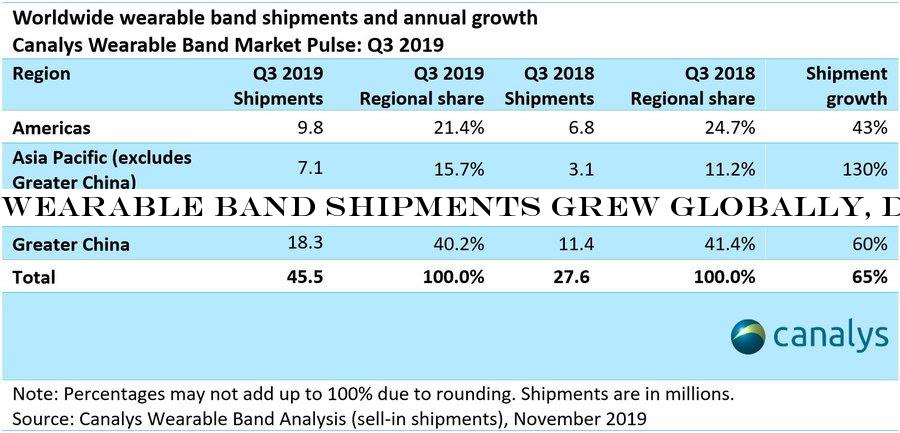
Low prices have been the key to the companysuccess, which have helped grow shipments in China by 60% overall. The companystrategy has also rubbed off on competitors like Samsung and Fitbit (soon to be counted among Googlenumbers), which have sought to offer low cost devices in order to appeal to those users, particularly in Asia.
Huawei saw substantial growth for the quarter, as well, at 243% year over year, courtesy of strong sales in its native China. Those numbers helped the company hold onto third place globally, just ahead of Fitbit.
Even Apple is offering up lower cost devices by keeping older model Apple Watches around, hitting the $200 price point The companynew, premium devices continue to dominate, however. The Series 5 comprise upwards of 60% of the companyglobal shipments for the quarter.
- Details
- Category: Technology
Read more: Wearable band shipments grew globally, driven by Xiaomi
Write comment (99 Comments)Welcome back to Startups Weekly, a weekend newsletter that dives into the weeknoteworthy startups and venture capital news. Before I jump into todaytopic, letcatch up a bit. Last week, I wrote about U.S. VC activity in Europe. Before that, I noted Chinese investor activity in Africa.
Remember, you can send me tips, suggestions and feedback to This email address is being protected from spambots. You need JavaScript enabled to view it. or on Twitter@KateClarkTweets. If you&re new, you can subscribe to Startups Weekly here.
Hello from Berlin, where we&ve just wrapped our annual conference, TechCrunch Disrupt Berlin. Top investors shared insight into European venture capital, well-known individuals and firms made announcements (large and small), and entrepreneurs pontificated about the future of startups in their respective regions.
As I spoke with various early-stage startup founders presenting at the event, chatted with U.S. and European venture capitalists and brain-stormed with my colleagues, I reflected on my last 12 months inside the tech bubble. Soon, I&ll be publishing an extended look at what I see as the 10 biggest themes in startups and VC in 2019. But for now, herea sneak peek at my top picks.
- SoftBank screw ups. From WeWork to Wag to Fair.com, SoftBank made headlines over and over again this year—for all the wrong reasons.
- WeWork woes. SoftBankstar portfolio company struggled the most. This was the biggest story of the year and its complete with drugs, private jets, burned cash and upset employees.
- CEO exodus. From Away co-founder Steph Korey to WeWorkAdam Neumann, a whole lot of executives exited their posts this year.
- Unicorn IPO struggles.Uber, Lyft, Pinterest, Zoom and more unicorns went public this year. Some fared better than others.
- The fight for seed. There was more competition than ever at the earliest stage of venture capital. As a result, investors got creative, hired fresh faces, raised new funds and even gave founders lavish gifts.
- Y Combinator growth. Everyonefavorite accelerator got a whole lot bigger this year. Not only did its cohorts swell, but its president, Sam Altman, stepped down and the firm cemented changes to its investment process.
- VCs + direct listings = <3. When venture capitalist weren&t busy gossiping about WeWork and SoftBank, they were debating a new and innovative path to the public markets: direct listings.
- Every startup is a bank. Brex raised hundreds of millions, Stripe launched a corporate card, credit card startup Deserve nabbed $50 million. 2019 was the year that consumer banking upstarts became the new e-scooter businesses.
- VC isn&t the only option. While VCs were going crazy for consumer financial services, companies like Clearbanc and Capital expanded to give founders alternatives to venture capital, like revenue-based financing and venture debt.
- The diversity disaster persists. Women still only raise 2.8% of venture capital in the U.S., up from 2.2%. Enough said.
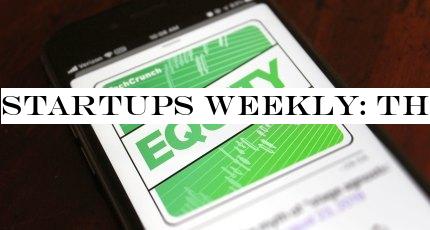
If you like this newsletter, you will definitely enjoyEquity, which brings the content of this newsletter to life — in podcast form! Join myself and Equity co-host Alex Wilhelm every Friday for a quick breakdown of the weekbiggest news in venture capital and startups.
This week, I sat down with Chris Mayo, head of primary markets at the London Stock Exchange, to discuss the rise of direct listings.
- Details
- Category: Technology
Read more: Startups Weekly: This year in startups
Write comment (92 Comments)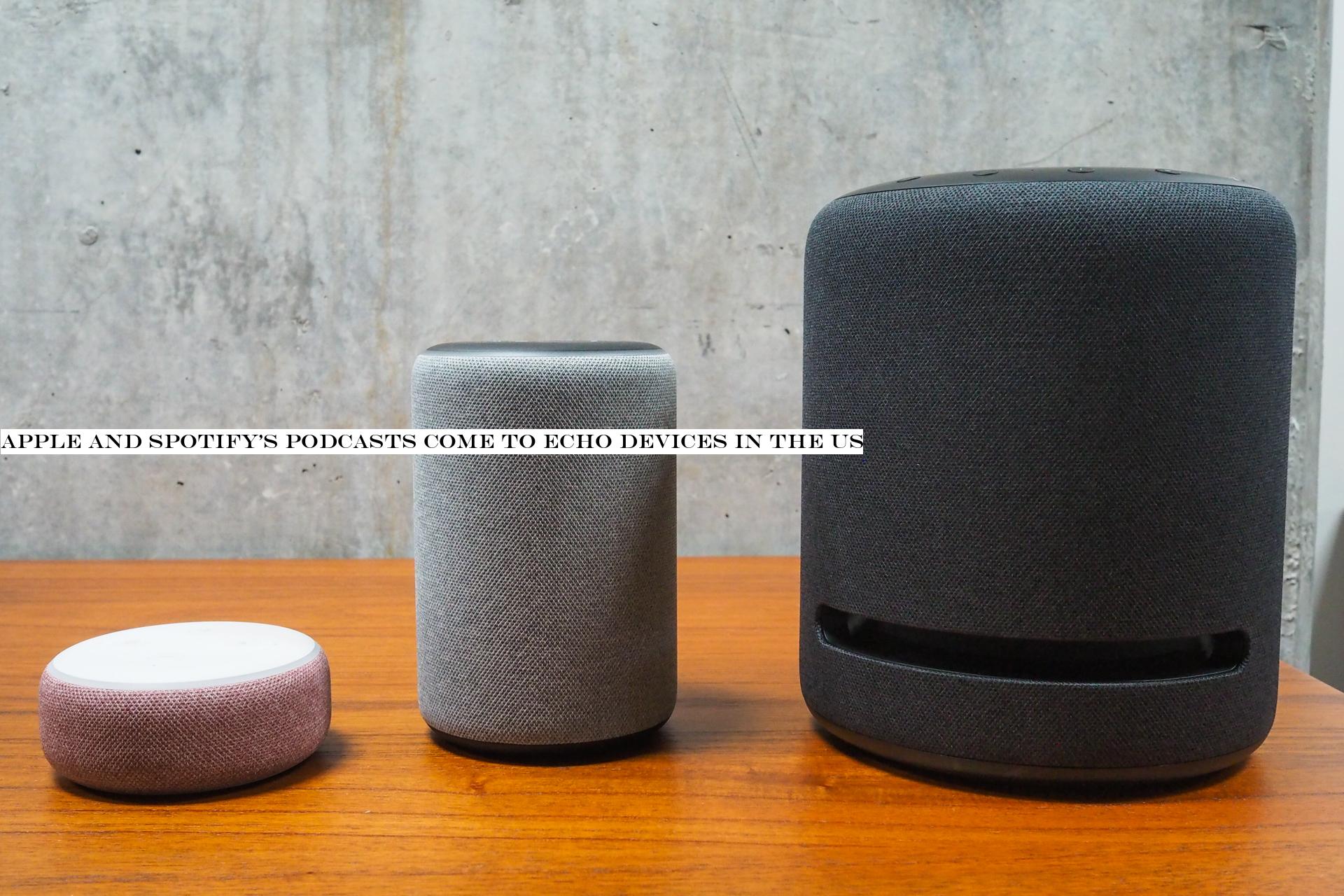
Amazon Alexa can now play podcasts from Apple, making Amazonline of Echo devices the first third-party clients to support the Apple Podcasts service without using AirPlay. Before, this level of support was limited to AppleHomePod. According to Amazon, the addition brings to Alexa devices Applelibrary of more than 800,000 podcasts. It also allows customers to set Apple Podcasts as their preferred podcast service.
The move is the latest in a series of partnerships between the two rivals, which also included the launch of the Apple TV app on AmazonFire TV platform, as well as the launch of Apple Music on Echo devices and Fire TV. Amazon, in response, has expanded its assortment of Apple inventory to include Apple TV, iPad, iPhone, Apple Watch and more.
To get started, Apple users who want to stream from Apple Podcasts will first need to link their Apple ID in the Alexa app. Customers can then ask Alexa to play or resume the podcasts they want to hear. Other player commands, like &next& or &fast forward,& work, too. And as you move between devices, your progress within each episode will also sync, which means you can start listening on Alexa, then pick up where you left off on your iPhone.
In the Alexa appSettings, users will also be able to specify Apple Podcasts as their default player, which means any time they ask Alexa for a podcast without indicating a source, it will stream from the Apple Podcasts service.
Not to be outdone, Spotify also today announced its support for streaming podcasts on Alexa in the U.S.
Of course, Spotify Premium users have been able to use Spotify Connect to stream to Echo before today.
But now, Spotify says that both Free and Premium U.S. customers will be able to ask Alexa for podcasts as well as set Spotify as their default player.
Alexasupport for Spotify podcasts was actually announced in September (alongside other news) at Amazonannual Alexa event in Seattle, so itless of a surprise than the Apple addition.
At the time, Amazon said it was adding support for Spotifypodcast library in the U.S., which would bring &hundreds of thousands& of podcasts to Alexa devices. That also includes Spotifynumerous exclusive podcasts — something that will give Echo users a reason to set Spotify as their default, perhaps.
Shortly after that announcement, Spotify said its free service would also now stream to Alexa devices, instead of only its paid service for Premium subscribers.
- Details
- Category: Technology
Read more: Apple and Spotify’s podcasts come to Echo devices in the US
Write comment (100 Comments)
As the holiday slowdown looms, the final U.S.-listed technology IPOs have come in and begun to trade.
Three tech, tech-ish or venture-backed companies went public this week: Bill.com, Sprout Social and EHang. Letquickly review how each has performed thus far. These are, bear in mind, the last IPOs of the year that we care about, pending something incredible happening. 2020 will bring all sorts of fun, but, for this time &round the sun, we&re done.
Pricing
Our three companies managed to each price differently. So, we have some variety to discuss. Herehow each managed during their IPO run:
- EHang priced at the bottom of its range, selling shares for $12.50 apiece
- Sprout Social priced mid-range at $17 per share after targeting a $16 to $18 per-share price interval
- Bill.com priced above its raised range, selling shares at $22 apiece after raising its interval from $16 to $18 to $19 to $21
How do those results stack up against their final private valuations? Doing the best we can, herehow they compare:
- EHang was worth around $680 million at its IPO price. The companyfinal private valuation (likely set during its $42 million Series B) is unknown. However, we&d guess that the IPO was at a higher price, given the time between the private round and the IPO.
- Sprout Social managed to slightly raise its valuation in its IPO. Worth around $814 million in the liquidity event, Sprout had been worth just over $800 million when private.
- Bill.com was valued at around $1.6 billion in its IPO, comfortably above its final private valuation of $1.0 billion.
So EHang priced low and its IPO is hard to vet, as we&re guessing at its final private worth. We&ll give it a passing grade. Sprout Social priced mid-range, and managed a slight valuation bump. We can give that a B, or B+. Bill.com managed to price above its raised range, boosting its valuation sharply in the process. Thatworth an A.
Performance
Trading just wrapped, so how have our companies performed thus far in their nascent lives as public companies? Herethe scorecard:
- EHangFriday closing price: $12.90 (+3.2%)
- Sprout SocialFriday closing price: $16.60 (-2.35%)
- Bill.comFriday closing price: $38.83 (+76.5%)
You can gist out the grades somewhat easily here, with one caveat. The Bill.com IPOmassive early success has caused the usual complaints that the firm was underpriced by its bankers, and was thus robbed to some degree. This argument makes the assumption that the public marketinitial pricing of the company once it began trading is reasonable (maybe!) and that the company in question could have captured most or all of that value (maybe!).
Bill.comCEOreaction to the matter puts a new spin on it, but you should at least know that the weekmost successful IPO has attracted criticism for being too successful. So forget any chance of an A+.
Image via Getty Images / Somyot Techapuwapat / EyeEm
- Details
- Category: Technology
Read more: Grading the final tech IPOs of 2019
Write comment (100 Comments)Page 130 of 5614

 9
9